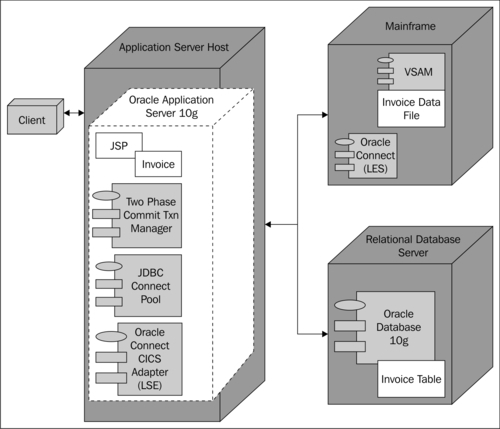Overview of this book
<p>Service Oriented Architecture (SOA) remains a buzzword in the business and IT community, largely because the ability to react quickly is of utmost importance. SOA can be the key solution to this. The challenge lies in the tricky task of integrating all the applications in a business through a Service Oriented Architecture, and “Do more with SOA Integration: Best of Packt” will help you do just that with content from a total of eight separate Packt books. <br /><br />“Do more with SOA Integration: Best of Packt” will help you learn SOA integration from scratch. It will help you demystify the concept of SOA integration, understand basic integration technologies and best practices, and get started with SOA Governance. “Do more with SOA Integration: Best of Packt” draws from eight separate titles from Packt’s existing collection of excellent SOA books:</p>
<ol>
<li>BPEL cookbook</li>
<li>SOA Approach to Integration</li>
<li>Service Oriented Architecture: An Integration Blueprint</li>
<li>Building SOA-Based Composite Applications Using NetBeans IDE 6</li>
<li>Oracle SOA Suite Developer's Guide</li>
<li>WS-BPEL 2.0 for SOA Composite Applications with Oracle SOA Suite 11g</li>
<li>Oracle Modernization Solutions</li>
<li>SOA Governance</li>
</ol>
<p><br />The chapters in “Do more with SOA Integration: Best of Packt” help you to learn from the best SOA integration content in no less than eight separate Packt books. The book begins with a refresher of SOA and the various types of integration available, and then delves deeper into integration best practices with XML, binding components and web services from Packt books like “Oracle SOA Suite Developer's Guide “ and “BPEL Cookbook”. Along the way you’ll also learn from a number of real world scenarios. By the end of “Do more with SOA Integration: Best of Packt” you will be equipped with knowledge from a wide variety of Packt books and will have learnt from a range of practical approaches to really get to grips with SOA integration.<br /><br />Chapter listings with corresponding titles:</p>
<ul>
<li><strong>Preface</strong> - Dismantling SOA Hype: A Real-World Perspective (BPEL cookbook)</li>
<li><strong>Chapter 1</strong> - Basic Principles: Types of integration (Service Oriented Architecture: An Integration Blueprint)</li>
<li><strong>Chapter 2</strong> - Integration Architecture, Principles, and Patterns (SOA Approach to Integration)</li>
<li><strong>Chapter 3</strong> - Base Technologies: Basic technologies needed for SOA integration (Service Oriented Architecture: An Integration Blueprint)</li>
<li><strong>Chapter 4</strong> - Best Practices for Using XML for Integration (SOA Approach to Integration)</li>
<li><strong>Chapter 5</strong> - Extending Enterprise Application Integration (BPEL cookbook)</li>
<li><strong>Chapter 6</strong> - Service-Oriented ERP Integration (BPEL cookbook)</li>
<li><strong>Chapter 7</strong> - Service Engines (Building SOA-Based Composite Applications Using NetBeans IDE 6) </li>
<li><strong>Chapter 8</strong> - Binding Components (Building SOA-Based Composite Applications Using NetBeans IDE 6) </li>
<li><strong>Chapter 9</strong> - SOA and Web Services Approach for Integration (SOA Approach to Integration)</li>
<li><strong>Chapter 10</strong> - Service- and Process-Oriented Approach to Integration Using Web Services (SOA Approach to Integration)</li>
<li><strong>Chapter 11</strong> - Loosely-coupling Services (Oracle SOA Suite Developer's Guide)</li>
<li><strong>Chapter 12</strong> – Integrating BPEL with BPMN using BPM Suite (WS-BPEL 2.0 for SOA Composite Applications with Oracle SOA Suite 11g) </li>
<li><strong>Chapter 13</strong> - SOA Integration—Functional View, Implementation, and Architecture (Oracle Modernization Solutions)</li>
<li><strong>Chapter 14</strong> – SOA Integration—Scenario in Detail (Oracle Modernization Solutions)</li>
<li><strong>Appendix</strong>: Bonus chapter - Establishing SOA Governance at Your Organization (SOA Governance)</li>
</ul>




